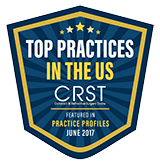Do you dream of waking up with clear vision without needing glasses or contact lenses to see? Are you tired of needing visual aids?
LASIK is an incredibly popular elective vision correction procedure and one of the most popular elective procedures you can undergo. It’s no wonder because LASIK is a simple and low-risk procedure that can give you total freedom from glasses and contact lenses.
Over 95% of LASIK patients achieve 20/20 vision or better after correcting their vision. It’s also highly accessible, meaning around 85% of people who have LASIK consultations are suitable LASIK candidates.
But one group of people don’t make good candidates for LASIK: teenagers. If you’re under 18, you cannot undergo LASIK. Keep reading to learn why teenagers don’t make good LASIK candidates!
How LASIK Works
You need to understand how LASIK works to understand who will qualify as a good LASIK candidate. LASIK is a refractive laser eye procedure, meaning it uses lasers to change the shape of your cornea to correct refractive errors.
If you have nearsightedness, farsightedness, or astigmatism, it’s due to the shape of your cornea. Your cornea is the transparent front of your eye that light passes through.
Light bends when passing through your cornea to hit a focal point. This process, called refraction, is how you can see clearly.
When your cornea is abnormally shaped, light doesn’t hit a focal point at the right place inside your eye, making images appear blurry at certain distances. LASIK uses lasers to create a flap in the cornea and then reshape the cornea to correct these irregularities, which corrects refractive errors.
Correcting refractive errors and reshaping the cornea permanently changes your vision and allows you to see clearly. However, if your refractive error were to change after having LASIK, your eyesight wouldn’t remain clear.
LASIK can only correct your current refractive errors. If teenagers have LASIK, it’s much more likely to cause problems. Unlike grown adults, their vision hasn’t developed and may change if they undergo a procedure like LASIK.
Teens and Vision Stability

Your vision is less likely to be stable when you’re still in your teens. At this age, you’ll have a lot of hormones in your system that can affect your vision.
This is why teenagers often need significant updates to their glasses and contact lens prescriptions every year. Having LASIK when your vision is still changing isn’t dangerous.
Your vision won’t be harmed in any way. However, you can’t get LASIK if you’re under 18 because it’s only FDA-approved for those 18 and older.
LASIK is not effective unless your prescription is stable. If your vision is still changing, getting LASIK won’t make it permanent.
Your vision could change after getting LASIK if your prescription is still changing, meaning you may need glasses or contact lenses or a follow-up procedure to make it more effective.
For LASIK surgery to remain effective, your vision must be stable before the procedure. One of the requirements for having LASIK is a stable prescription.
How Old Should You Be if You Want LASIK?

To have LASIK surgery, you should be at least 18 years old. However, even if you are 18, you may not be a good LASIK candidate.
While some people don’t experience many changes to their vision once they’re 18, your body can still grow and change until your early to mid-twenties, which also applies to your vision. You cannot have LASIK until your vision is entirely stable, regardless of age.
Prescription Stability Requirements

Regardless of age, you must have a stable prescription before being a good candidate for LASIK. To have a stable prescription means your eyes haven’t changed in a year or more, at a minimum.
If your prescription has remained unchanged for longer, that’s even better, but your eyes need to be stable for a year at the absolute minimum. If your prescription is stable and you’re over 18, it means it’s much more likely that the procedure will remain effective.
However, having a stable prescription is only one of the candidacy requirements for having LASIK. If you have stable vision but don’t meet other LASIK candidacy factors, you may not qualify for LASIK.
Other LASIK Candidacy Requirements
Age and prescription stability are two critical requirements for LASIK candidates. But they aren’t the only requirements.
To get LASIK surgery, you also need to have a prescription that’s within acceptable limits. Although LASIK is an incredible procedure, if your prescription is outside the treatment limits, LASIK may not be suitable for you.

These limits are usually -11.00 D for nearsightedness, +5.00 for farsightedness, and 5.00 for astigmatism. LASIK can treat a wide range of prescriptions, so there’s an excellent chance your prescription will be within its limits. If your prescription is too strong, your ophthalmologist may recommend another procedure like PRK.
To be a good LASIK candidate, you must also be healthy. You may not be well suited for any elective surgery if you have an autoimmune condition.
You should also have healthy eyes, meaning you shouldn’t have any eye conditions besides a refractive error. Certain requirements need to be assessed professionally with an evaluation.
When you get a LASIK evaluation, your LASIK surgeon will want to assess your tear quality and distribution and measure your corneal thickness and pupil size, amongst other tests.
Most patients over 18 with stable prescriptions within acceptable limits and good overall health make good LASIK candidates. Are you ready to find out if you could be a good LASIK candidate?
Today, schedule your LASIK consultation at Williamson Eye Center in Baton Rouge, LA! Isn’t it time to say yes to better vision and seeing with crystal-clear clarity?



